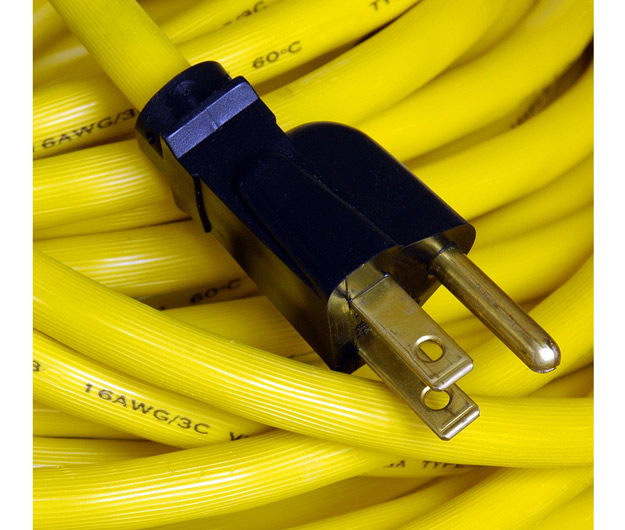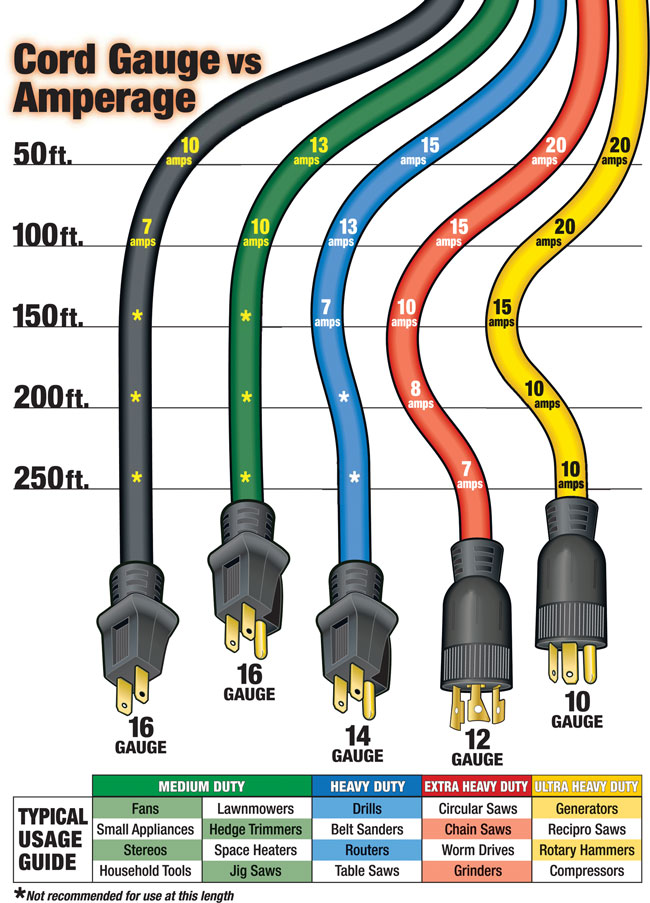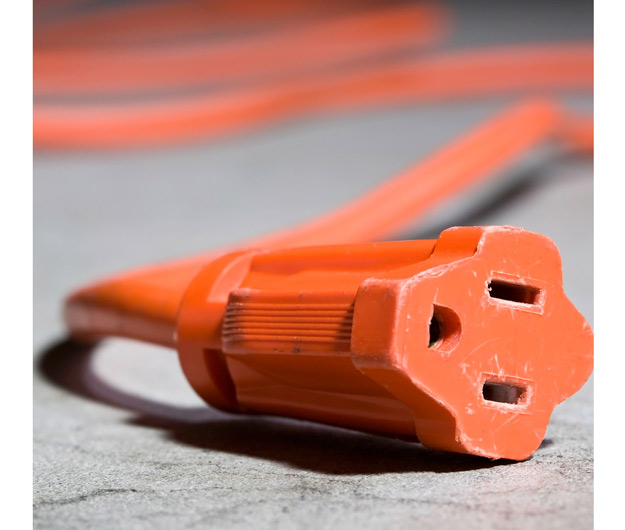Model:
Your Model No.:
Mfr. Model No.:


The first step when choosing an extension cord is to consider the environment you're working in and what kind of protection your cord will need from the elements. Whether this extension cord will be subjected to moisture, direct sunlight, cold temperatures or other potentially harmful conditions, you will need a cord that can handle the wear and tear.
| Here is a list of the different cord types: | |
| Indoor/Outdoor | Extension cords that are suited to light industrial, contractor, and general home use. |
| Outdoor (Heavy & Extra-Heavy Duty) |
Extension cords with a thicker jacket for industrial and contractor use. |
| All-Weather | Similar to outdoor extension cords but with ultra flexibility for superior |
| Specialty | Special use extension cords for specific applications like large appliances, generators, etc. |

While cord types are helpful in determining the best extension cord for different environments, designation letters allow for a more precise representation of a cord's capabilities. The outer layer (jacket) of an extension cord includes a designation that is made up of a sequence of letters, each of which have a specific meaning. Knowing these letter designations will help you in determining the right cord for your application.
| The meaning for each letter designation is as follows: | |
| S | Flexible extension cord rated for general use. |
| W | Extension cord is rated for outdoor. |
| V | Vacuum wire, softer and more flexible than standard "SJT" rated cords usually found on retractable cord reels. |
| J | The extension cord includes a 300V insulation (if "J" is not included, the extension cord includes a 600V insulation). |
| P | Indicates a parallel wire construction, used in air condition cords. |
| T | Cord jacket/cover is made from vinyl thermoplastic. |
| E | Cord jacket/cover is made from thermoplastic elastomer rubber. |
| O | Cord is oil resistant. |
| FT2 | This letter group means the product is flame retardant. |
| CL2 | This letter group (sometimes referred to as class 2) means the cord can be used for in-wall construction. |
| SRDT | Heavy-duty wire made specifically for use with higher amperage equipment. |
| HPN | High-heat parallel neoprene wire for applications where high temperatures of an appliance could affect cord performance. |

Finding the right extension cord also involves understanding the amperage, cord length, and gauge ratings. Combined, these three facets play a vital role in ensuring the cord matches the job.
To start, any extension cord you purchase will have an AWG (American Wire Gauge) rating, which is a standardized gauge system for measuring electrical wire. Typically, the AWG rating will consist of gauge and the number of conducting wires. For example, a 12/3 extension cord contains 12-gauge wire and three conductions. For AWG ratings, lower numbers indicate a thicker wire and higher capacity. Essentially, the lower the number, the more power an extension cord is capable of delivering.
Amperage is also an important factor in extension cord selection. The amperage of a cord determines how much power it can handle. Generally, 15 and 20 amp cords can handle most day-to-day power requirements, while high-amperage appliances may require higher-rated cords.
Finally, the length of an extension cord will determine its power capacity. Each extra foot that is added to a cord increases its electrical resistance, which in turns reduces the amount of power a cord can generate. When selecting your extension cord, choose the shortest extension cord possible when extra power is required.

Max quantity is 999999999. Your cart item has been updated
Model:
Your Model No.:
Mfr. Model No.:
Qty.: